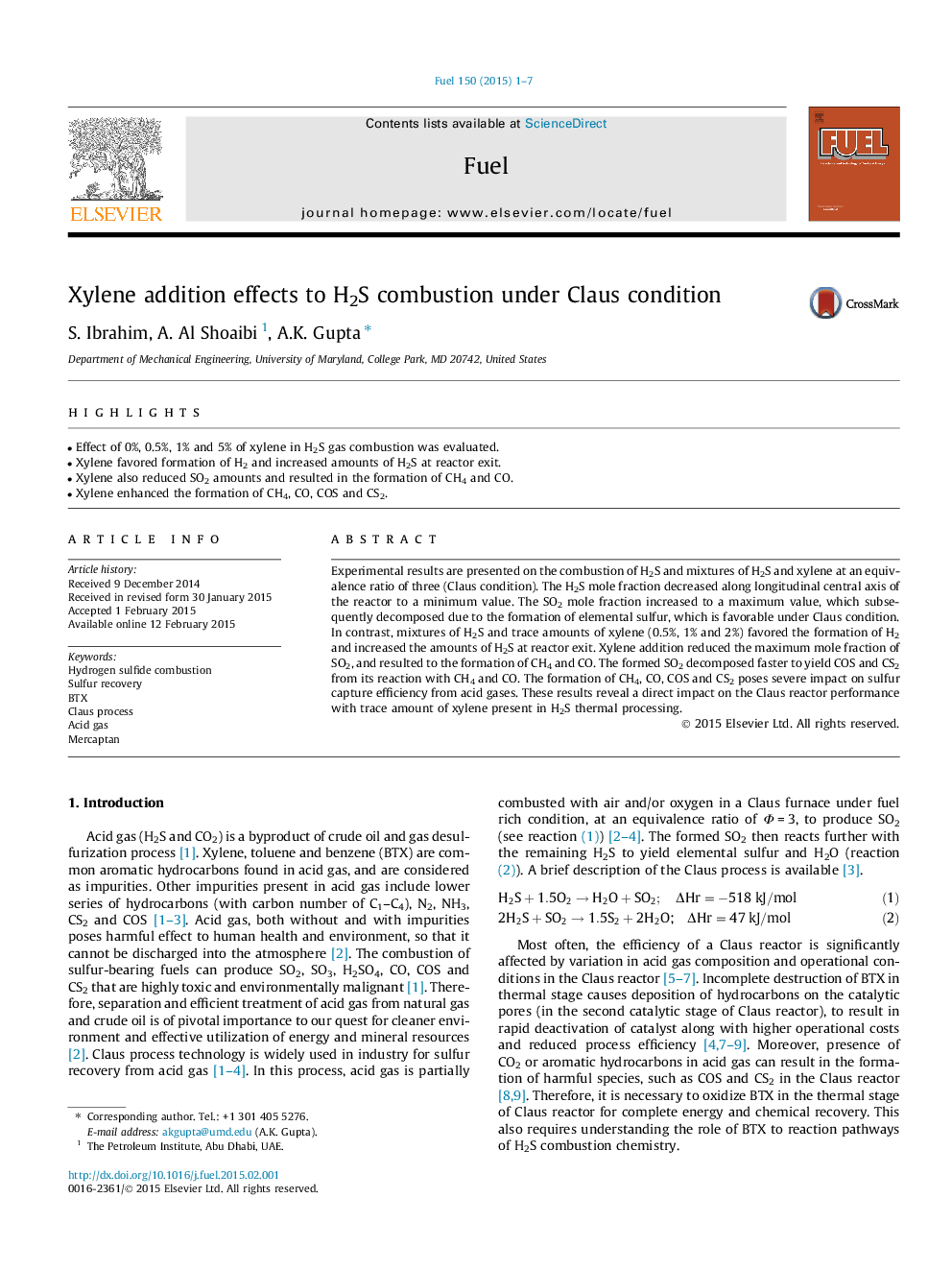| Article ID | Journal | Published Year | Pages | File Type |
|---|---|---|---|---|
| 205679 | Fuel | 2015 | 7 Pages |
•Effect of 0%, 0.5%, 1% and 5% of xylene in H2S gas combustion was evaluated.•Xylene favored formation of H2 and increased amounts of H2S at reactor exit.•Xylene also reduced SO2 amounts and resulted in the formation of CH4 and CO.•Xylene enhanced the formation of CH4, CO, COS and CS2.
Experimental results are presented on the combustion of H2S and mixtures of H2S and xylene at an equivalence ratio of three (Claus condition). The H2S mole fraction decreased along longitudinal central axis of the reactor to a minimum value. The SO2 mole fraction increased to a maximum value, which subsequently decomposed due to the formation of elemental sulfur, which is favorable under Claus condition. In contrast, mixtures of H2S and trace amounts of xylene (0.5%, 1% and 2%) favored the formation of H2 and increased the amounts of H2S at reactor exit. Xylene addition reduced the maximum mole fraction of SO2, and resulted to the formation of CH4 and CO. The formed SO2 decomposed faster to yield COS and CS2 from its reaction with CH4 and CO. The formation of CH4, CO, COS and CS2 poses severe impact on sulfur capture efficiency from acid gases. These results reveal a direct impact on the Claus reactor performance with trace amount of xylene present in H2S thermal processing.
